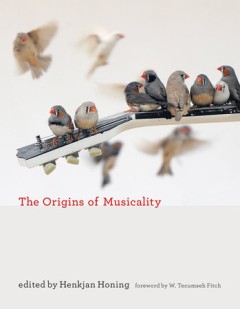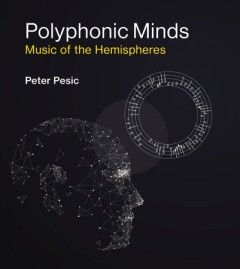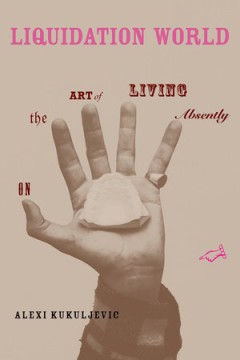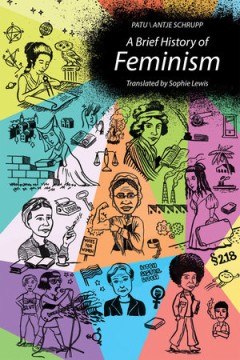Filter by

Suzan-Lori Parks in Person
This collection of interviews offers unprecedented insight into the plays and creative works of Suzan-Lori Parks, as well as being an important commentary on contemporary theater and playwriting, from jazz and opera to politics and cultural memory. Suzan-Lori Parks in Person contains 18 interviews, some previously untranscribed or specially undertaken for this book, plus commentaries on her …
- Edition
- -
- ISBN/ISSN
- -
- Collation
- -
- Series Title
- -
- Call Number
- -

The Genius Checklist: Nine Paradoxical Tips on How You Can Become a Creative …
What it takes to be a genius: nine essential and contradictory ingredients. What does it take to be a genius? A high score on an IQ test? Brilliant physicist Richard Feynman's IQ was too low for membership in Mensa. Suffering from varying degrees of mental illness? Creativity is often considered a marker of mental health. Be a child prodigy like Mozart, or a later bloomer like Beethoven? Die t…
- Edition
- -
- ISBN/ISSN
- 9780262347167
- Collation
- -
- Series Title
- -
- Call Number
- -

The Origins of Musicality
Interdisciplinary perspectives on the capacity to perceive, appreciate, and make music. Research shows that all humans have a predisposition for music, just as they do for language. All of us can perceive and enjoy music, even if we can't carry a tune and consider ourselves “unmusical.” This volume offers interdisciplinary perspectives on the capacity to perceive, appreciate, and make mu…
- Edition
- -
- ISBN/ISSN
- 9780262344548
- Collation
- -
- Series Title
- -
- Call Number
- -

Russian Cosmism
Crucial texts, many available in English for the first time, written before and during the Bolshevik Revolution by the radical biopolitical utopianists of Russian Cosmism. Cosmism emerged in Russia before the October Revolution and developed through the 1920s and 1930s; like Marxism and the European avant-garde, two other movements that shared this intellectual moment, Russian Cosmism rejected…
- Edition
- -
- ISBN/ISSN
- 780262344906
- Collation
- -
- Series Title
- -
- Call Number
- -

Polyphonic Minds: Music of the Hemispheres
An exploration of polyphony and the perspective it offers on our own polyphonic brains. Polyphony—the interweaving of simultaneous sounds—is a crucial aspect of music that has deep implications for how we understand the mind. In Polyphonic Minds, Peter Pesic examines the history and significance of “polyphonicity”—of “many-voicedness”—in human experience. Pesic presents the e…
- Edition
- -
- ISBN/ISSN
- 9780262342902
- Collation
- -
- Series Title
- -
- Call Number
- -

Shanzhai: Deconstruction in Chinese
Tracing the thread of “decreation” in Chinese thought, from constantly changing classical masterpieces to fake cell phones that are better than the original. Shanzhai is a Chinese neologism that means “fake,” originally coined to describe knock-off cell phones marketed under such names as Nokir and Samsing. These cell phones were not crude forgeries but multifunctional, stylish, and …
- Edition
- -
- ISBN/ISSN
- 9780262343572
- Collation
- -
- Series Title
- -
- Call Number
- -

Liquidation World: On the Art of Living Absently
An examination of the disoriented subject of modernity: a dissolute figure who makes an makes an object of its absence; from Baudelaire to Broodthaers. In Liquidation World, Alexi Kukuljevic examines a distinctive form of subjectivity animating the avant-garde: that of the darkly humorous and utterly disoriented subject of modernity, a dissolute figure that makes an art of its own vacancy, an …
- Edition
- -
- ISBN/ISSN
- 9780262342124
- Collation
- -
- Series Title
- -
- Call Number
- -

A Brief History of Feminism
An engaging illustrated history of feminism from antiquity through third-wave feminism, featuring Sappho, Mary Magdalene, Mary Wollstonecraft, Sojourner Truth, Simone de Beauvoir, and many others. The history of feminism? The right to vote, Susan B. Anthony, Gloria Steinem, white pantsuits? Oh, but there's so much more. And we need to know about it, especially now. In pithy text and pithier …
- Edition
- -
- ISBN/ISSN
- 9780262343510
- Collation
- -
- Series Title
- -
- Call Number
- -

Voicetracks: Attuning to Voice in Media and the Arts
The affects, aesthetics, and ethics of voice in the new materialist turn, explored through encounters with creative works in media and the arts. Moved by the Aboriginal understandings of songlines or dreaming tracks, Norie Neumark's Voicetracks seeks to deepen an understanding of voice through listening to a variety of voicing/sound/voice projects from Australia, Europe and the United States. …
- Edition
- -
- ISBN/ISSN
- 9780262339834
- Collation
- -
- Series Title
- -
- Call Number
- -

William Kentridge
Critical texts and interviews that explore the drawings, animations, and theatrical work of the South African artist William Kentridge. Since the 1970s, the South African artist William Kentridge has charted the turbulent terrain of his homeland in both personal and political terms. With erudition, absurdist humor, and an underlying hope in humankind, Kentridge's artwork has examined apartheid…
- Edition
- -
- ISBN/ISSN
- 9780262340014
- Collation
- -
- Series Title
- -
- Call Number
- -
 Computer Science, Information & General Works
Computer Science, Information & General Works  Philosophy & Psychology
Philosophy & Psychology  Religion
Religion  Social Sciences
Social Sciences  Language
Language  Pure Science
Pure Science  Applied Sciences
Applied Sciences  Art & Recreation
Art & Recreation  Literature
Literature  History & Geography
History & Geography